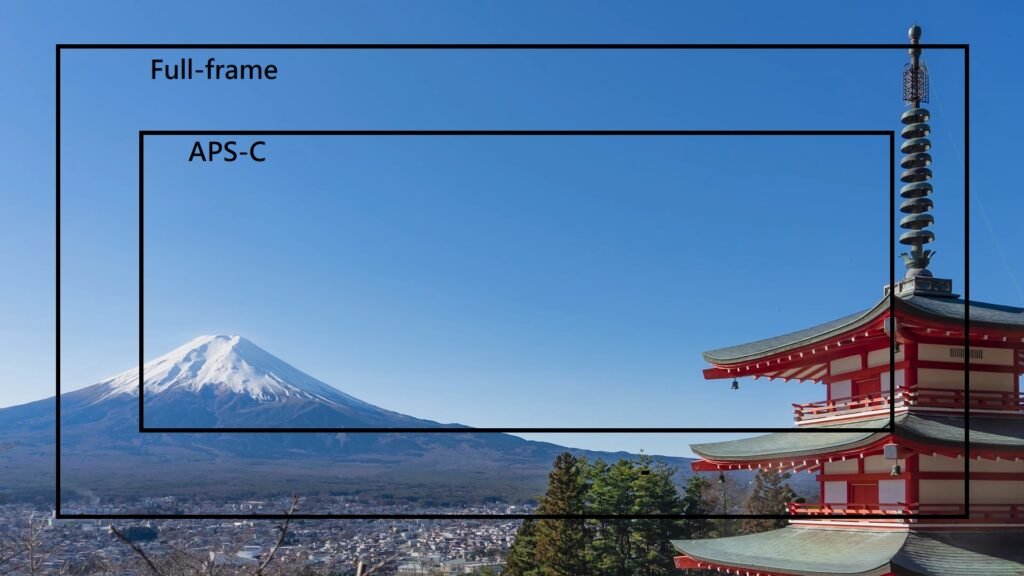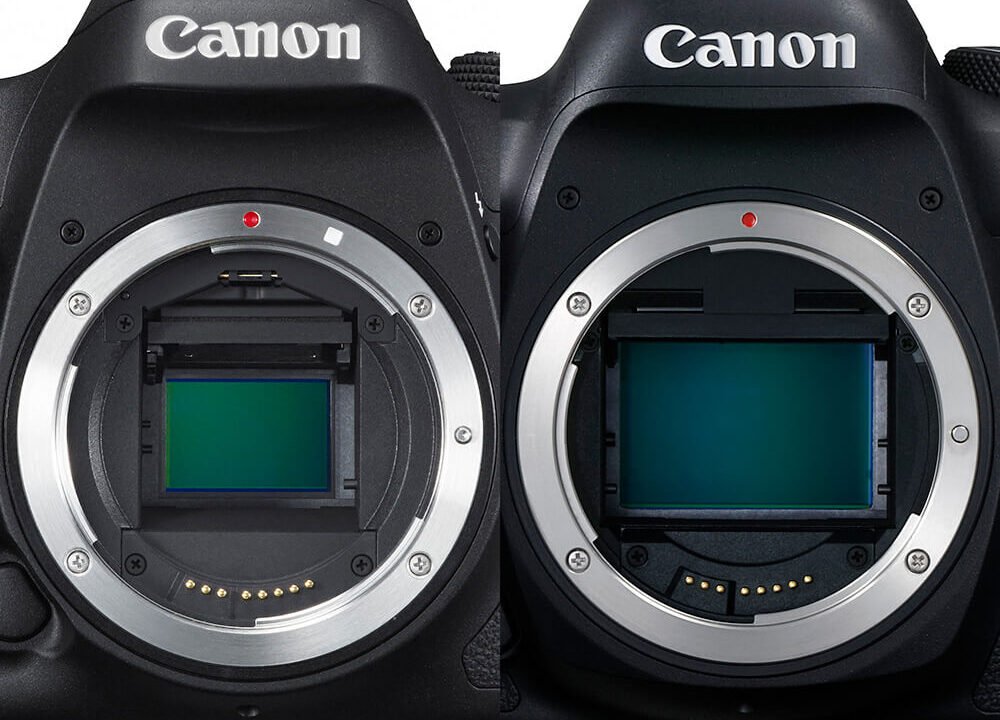The term Full-frame has recently become popular again due to the appearance of relatively cheap FF DSLRs such as Canon 5D and Nikon D700! So what is Full-frame? Not all DSLRs have the same format? In fact, you should have read the terms Full-frame and APS-C in newspapers and magazines. Now let’s take a look at the relationship between these two formats.
The Size of the Image Sensor
The biggest difference between APS-C (that is, the format commonly used by DSLR) and Full-frame is the size of the image sensor element. The area ratio of the image sensor element of Full-frame and APS-C is about 2:1, and the size of the APS-C image sensor element is different. More than 24 x 16mm, and the size of the Full-frame is 36 x 24mm, which is the same as the traditional 35mm film. APS-C can only obtain the center part of the image circle of the lens due to the small size of the image sensor element, and the angle of view will become smaller, giving the image a “zoom out” effect. The magnifications of Canon and Nikon are approximately 1.6x and 1.5x, so a lens with a focal length of 18-55mm on Nikon’s APS-C camera will become an actual focal length of approximately 27-82mm.
Advantages of Full-frame
- High resolution
Theoretically, if the pixels are the same and the image sensor element is large, the light-receiving area of each pixel will also increase, so the resolution will be improved. - Signal to noise control
Because the pixel area is large, it can absorb more information than APS-C under the same amount of light, and the signal amplifier has a low amplification rate, so the full frame can more effectively control the signal to noise ratio, and it can perform better and smoother at high ISO. - The view finder is bigger and clearer
Because of the large image sensor element, a larger and better-quality pentaprism can be used in the camera, which makes the viewfinder image larger and clearer, while the APS-C is like “viewing the sky from a telescope”. - Light blooming is relatively low
Blooming effect is when the camera is shooting very bright objects (such as the sun) when the sensor information is saturated, and the entire screen forms a white stripe from the top to the bottom. It is common in photos that include the sun. Because the Full-frame pixel area is large, the information is difficult to saturate, so the light overflow is also slight. - The dark gradation is prominent
Same as the previous feature, because Full-Frame has a large pixel area and is more sensitive to low light, it can also display dark levels. If explained together with the previous point, Full-Frame has a wider dynamic range. - No special lens needed for ultra-wide-angle shooting
Because there is no problem of zooming in, a 10mm lens can make the most of its ultra-wide angle in Full-frame.

Disadvantage of Full-frame
- Price is high
Undeniably, because all the components have been enlarged, the cost of the body and lens has increased and the price has been high. Now the cheapest Full-frame DSLR is also close to the price of GBP2,000 ! - Large and heavy
Needless to say the volume, the most unfortunate thing is that even the lens is also enlarged (because the lens diameter needs to be matched), which makes it inconvenient to carry and requires high physical strength. - No effect on long focal length lense
Also because there is no zoom in, a 300mm lens is only 300mm in Full-frame, but it is 1.5-1.6 times under APS-C.
Do beginners need to use Full-frame?
If you are a beginner, considering the price, the number of lenses that support Full-frame, the weight and volume, of course, it is not necessary to use the Full-frame model. But if you insist to have high image quality and low signal noise than the ease of use Full-frame camera would be a better choice. If you have good stamina and a sufficient budget, there is nothing wrong with getting a Full-frame to play with!
Written by Collin Smith @ remotes.works Holborn London

 My Account
My Account 


